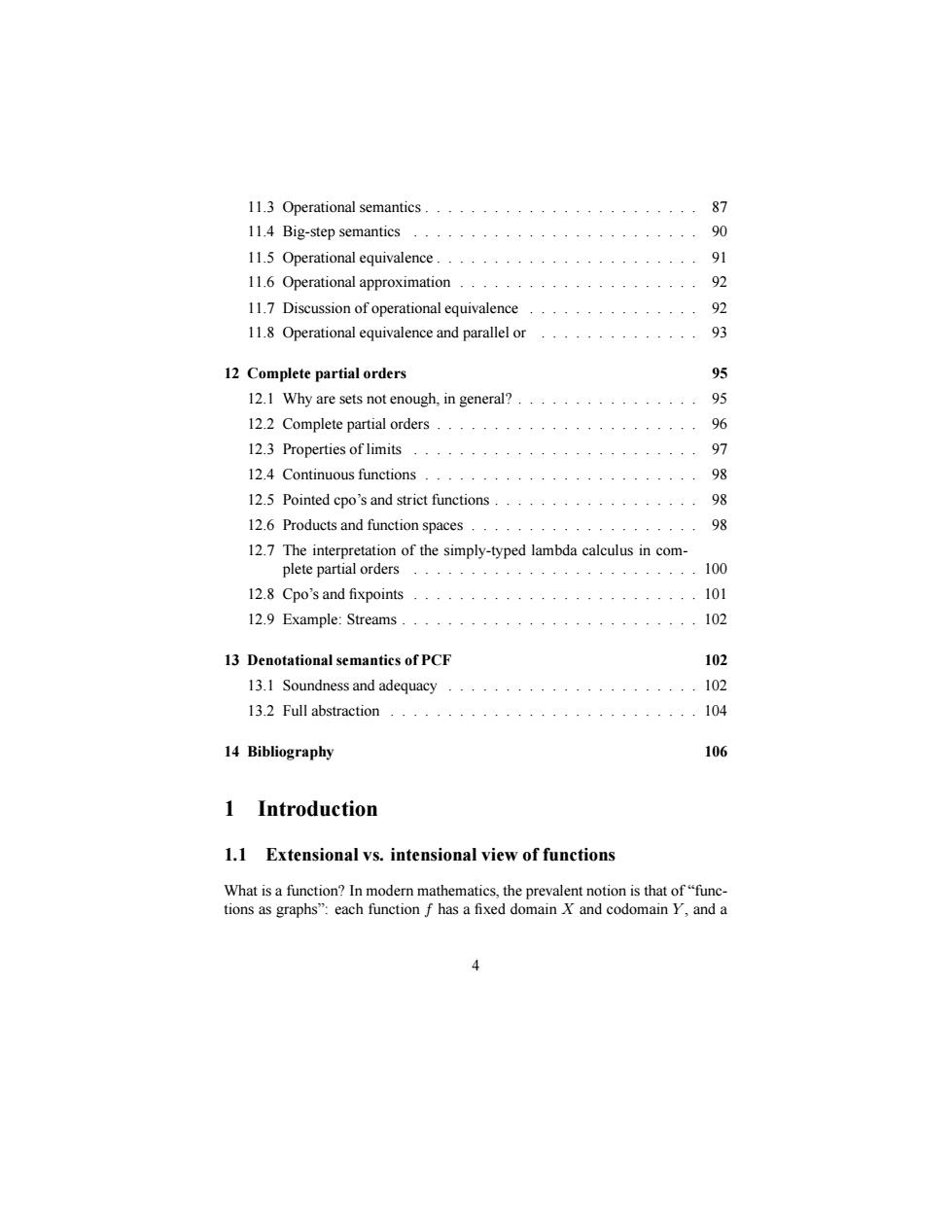正在加载图片...

11.3 Operational semantics 。。。 11.4 Big-step semantics 90 11.5 Operational equivalence. 91 11.6 Operational approximation 2 11.7 Discussion of operational equivalence 11.8 Operational equivalence and parallel or 93 12 Complete partialorders 95 12.1 Why are sets not enough.in general? 95 12.2 Complete partial orders....................... 96 12.3 Properties of limits. 9 12.4 Continuous functions 12.5 Pointed cpo's and strict functions 98 126 Productsand function spaces 98 12.7The of the simply-typed lambda caculus in com- plete partia rder 12.8 Cpo's and fixpoints 101 12.9 Example:Streams 102 13 Denotational semantics of PCF 102 13.1 Soundness and adequacy 102 13.2 Full abstraction 104 14 Bibliography 气 1 Introduction 1.1 Extensional vs.intensional view of functions What is a function?In modern mathematics the prevalent notion is that of"func tions as graphs":each function f has a fixed domain X and codomain Y,and a11.3 Operational semantics . . . . . . . . . . . . . . . . . . . . . . . . 87 11.4 Big-step semantics . . . . . . . . . . . . . . . . . . . . . . . . . 90 11.5 Operational equivalence . . . . . . . . . . . . . . . . . . . . . . . 91 11.6 Operational approximation . . . . . . . . . . . . . . . . . . . . . 92 11.7 Discussion of operational equivalence . . . . . . . . . . . . . . . 92 11.8 Operational equivalence and parallel or . . . . . . . . . . . . . . 93 12 Complete partial orders 95 12.1 Why are sets not enough, in general? . . . . . . . . . . . . . . . . 95 12.2 Complete partial orders . . . . . . . . . . . . . . . . . . . . . . . 96 12.3 Properties of limits . . . . . . . . . . . . . . . . . . . . . . . . . 97 12.4 Continuous functions . . . . . . . . . . . . . . . . . . . . . . . . 98 12.5 Pointed cpo’s and strict functions . . . . . . . . . . . . . . . . . . 98 12.6 Products and function spaces . . . . . . . . . . . . . . . . . . . . 98 12.7 The interpretation of the simply-typed lambda calculus in complete partial orders . . . . . . . . . . . . . . . . . . . . . . . . . 100 12.8 Cpo’s and fixpoints . . . . . . . . . . . . . . . . . . . . . . . . . 101 12.9 Example: Streams . . . . . . . . . . . . . . . . . . . . . . . . . . 102 13 Denotational semantics of PCF 102 13.1 Soundness and adequacy . . . . . . . . . . . . . . . . . . . . . . 102 13.2 Full abstraction . . . . . . . . . . . . . . . . . . . . . . . . . . . 104 14 Bibliography 106 1 Introduction 1.1 Extensional vs. intensional view of functions What is a function? In modern mathematics, the prevalent notion is that of “functions as graphs”: each function f has a fixed domain X and codomain Y , and a 4